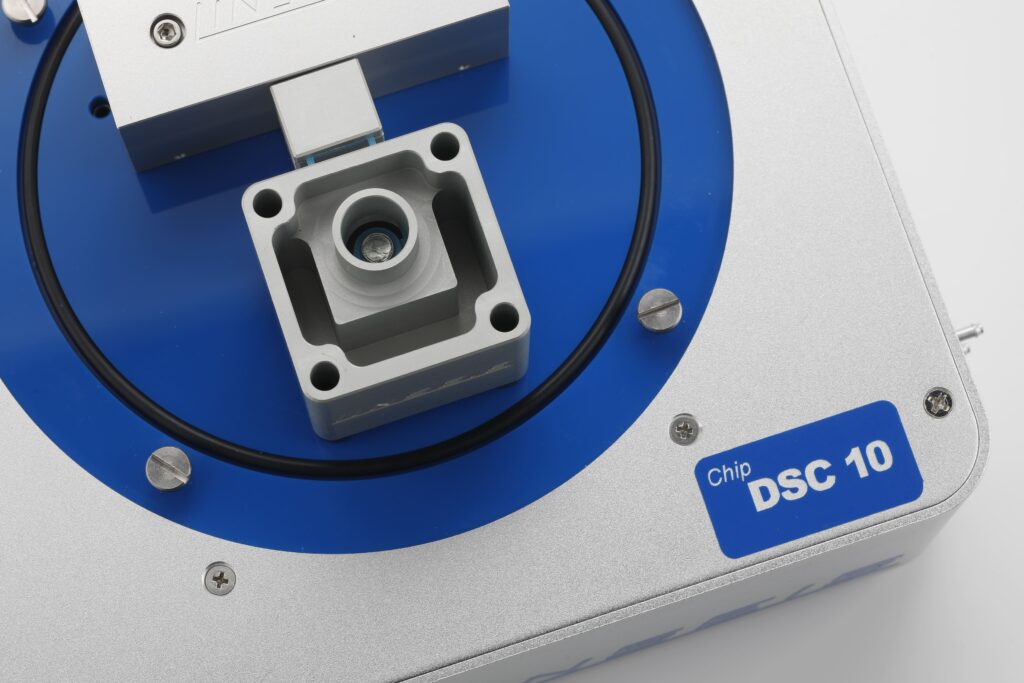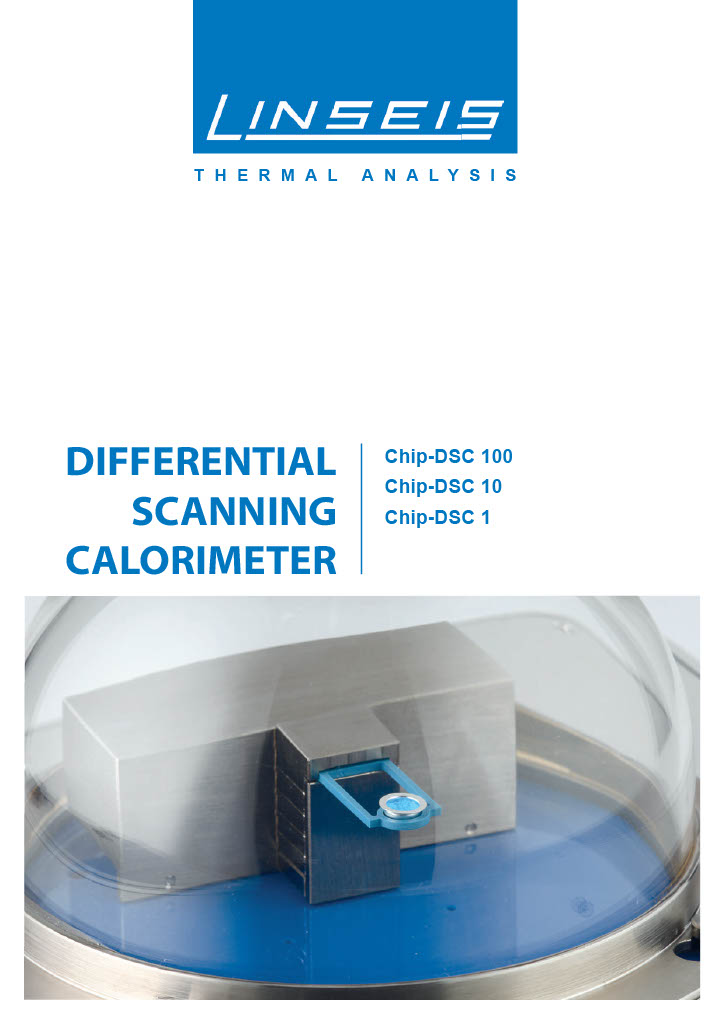The Chip DSC 10 integrates all essential parts of the DSC, heater, sensor and electronics in a miniaturized housing. The chip arrangement consists of a heater and temperature sensor in a chemically inert ceramic arrangement with a metallic heater and temperature sensor.
This arrangement enables high reproducibility and, due to the low mass, excellent temperature control and heating rates of up to 300 K/min.
The integrated sensor is easily replaceable and available at low cost.
The integrated design of the chip sensor provides excellent raw data, allowing direct analysis without pre- or post-processing of the heat flow data.
The compact design leads to a significant reduction in production costs, which can be passed on to our customers.
The low energy consumption and unsurpassed dynamics result in the unrivaled performance of this revolutionary DSC concept.
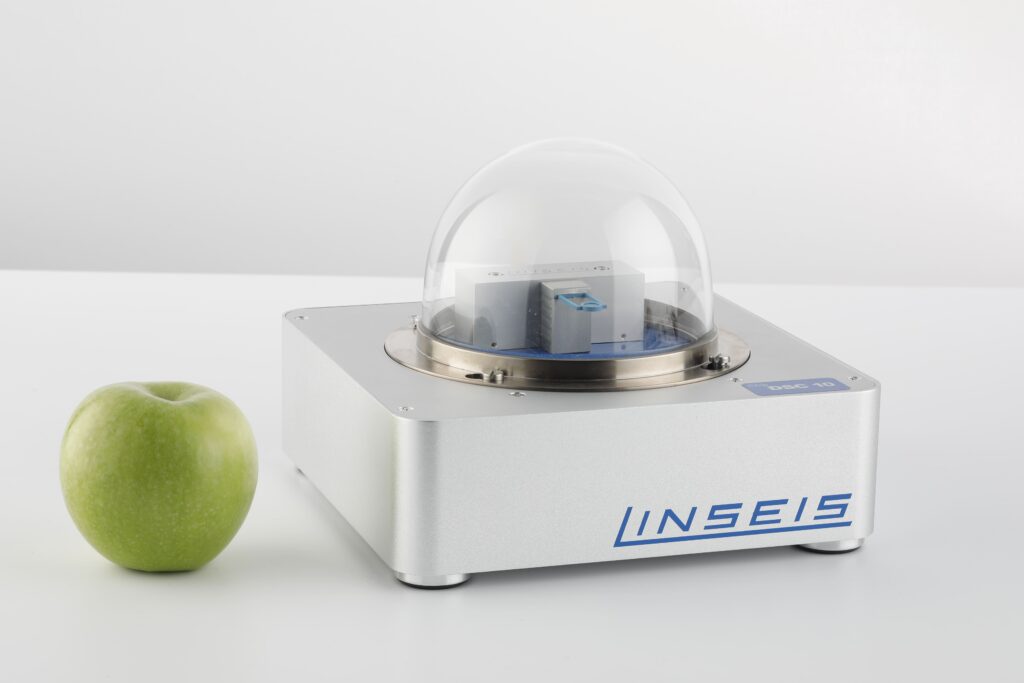
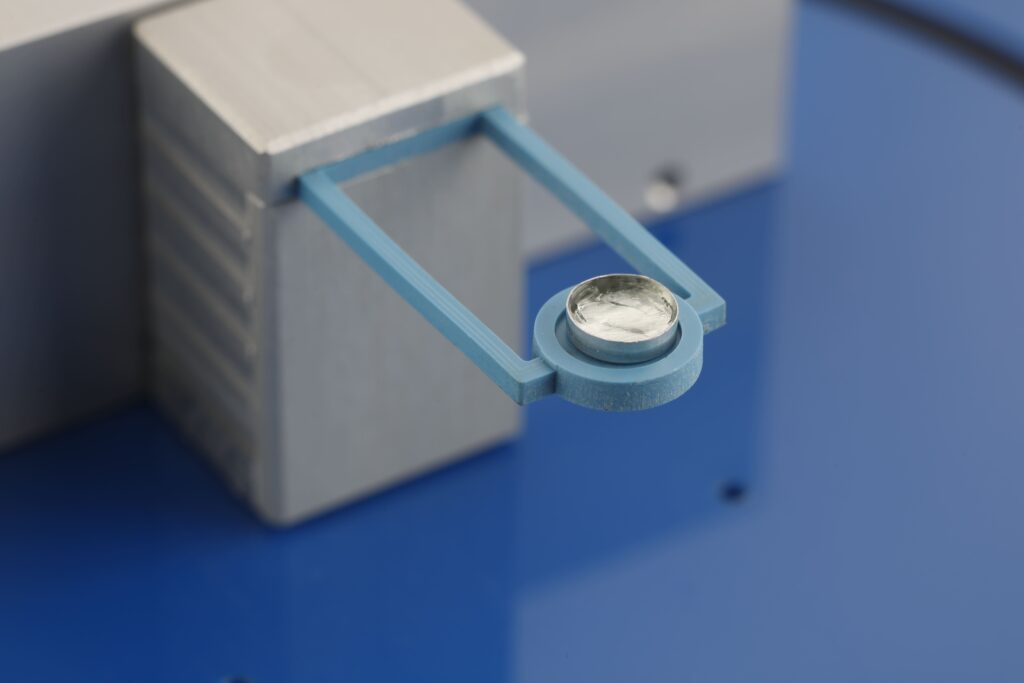
Chip technology
The world’s only chip DSC sensor with integrated heater and heat flux sensor.
Unsurpassed heating and cooling rates and time constants.
Benchmark resolution – precise separation of overlapping events
The unique sensor design enables excellent resolution and perfect separation of overlapping effects.
Highest sensitivity – for the detection of melts and weak transitions
The innovative chip design enabled us to develop a DSC sensor with the lowest possible mass.
This makes it possible to offer a heat flow DSC with an unsurpassed response rate.
Unsurpassed cooling speed – thanks to “low mass” chip sensor
Due to the low mass of our sensor, we can achieve unsurpassed cooling speeds, resulting in new applications and higher sample throughput.
Unique features
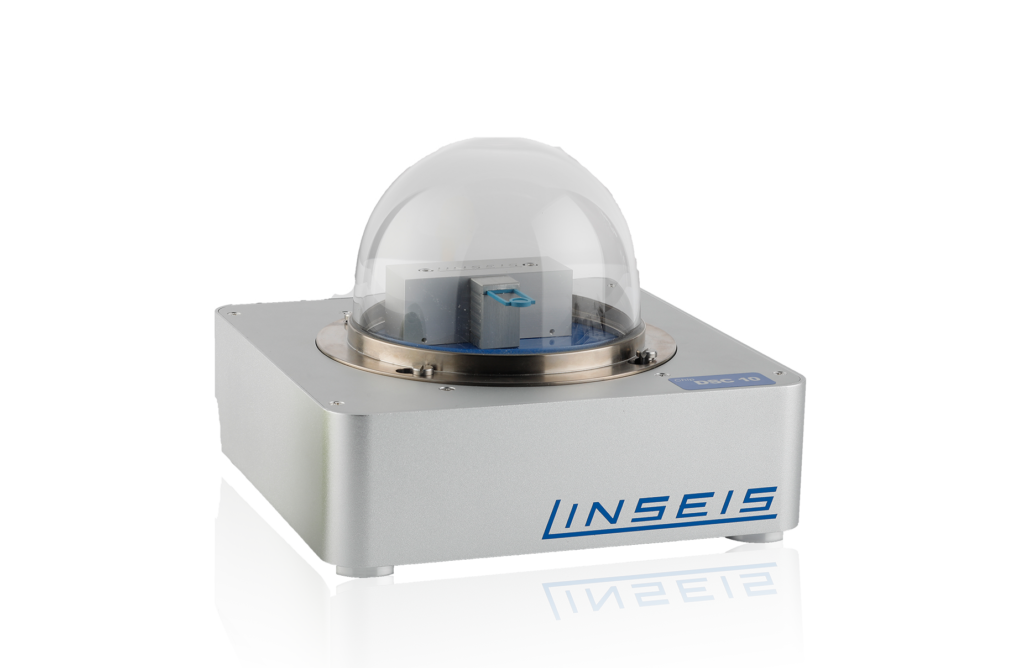
High reproducibility
and sensitivity
Wide range of applications
Patented sensor concept
Integrated chip technology
Questions? We're just a call away!
+1 (609) 223 2070
+49 (0) 9287/880 0
Our service is available Monday to
Thursday from 8 am to 4 pm
and Friday from 8 am to 12 pm.
We are here for you!
Specifications
Hard Facts
MODEL | CHIP-DSC 10* |
|---|---|
| Temperature range: | -180°C (with corresponding cooling option) up to +600°C |
| Heating and cooling rates: | 0,001 bis 300 K/min |
| Temperature accuracy: | +/- 0,2K |
| Repeatability: | +/- 0,02K |
| Digital resolution: | 16.8 million points |
| Resolution: | 0,03 µW |
| Atmospheres: | inert, oxidizing (static, dynamic) |
| Measuring range: | +/-2,5 bis +/- 1000 mW |
| Calibration materials | inclusive |
| Calibration: | recommended interval of 6 months |
| *Specifications depend on the configurations |
Quench cooling system (-180 – 600°C)
The quench cooling accessory provides an open cooling container that surrounds the sensor and the sample.
Depending on the coolant, the sample temperature can drop to -180 °C.
This system does not allow defined gas atmospheres during a measurement as the sample is surrounded by outgassing.
Data sheet
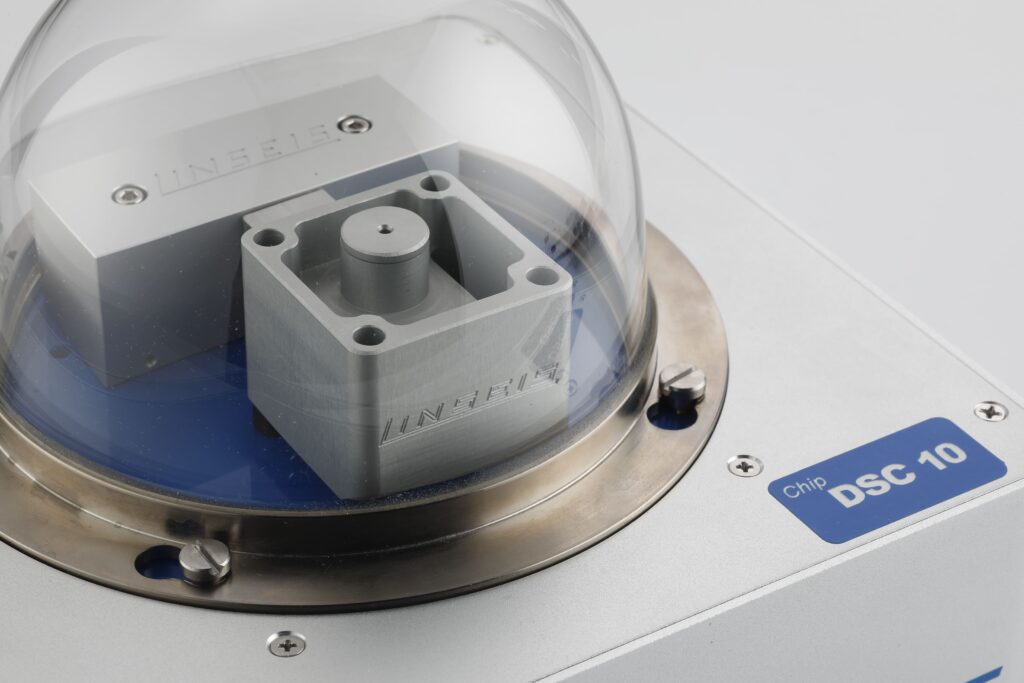
Quench cooling system under glass dome
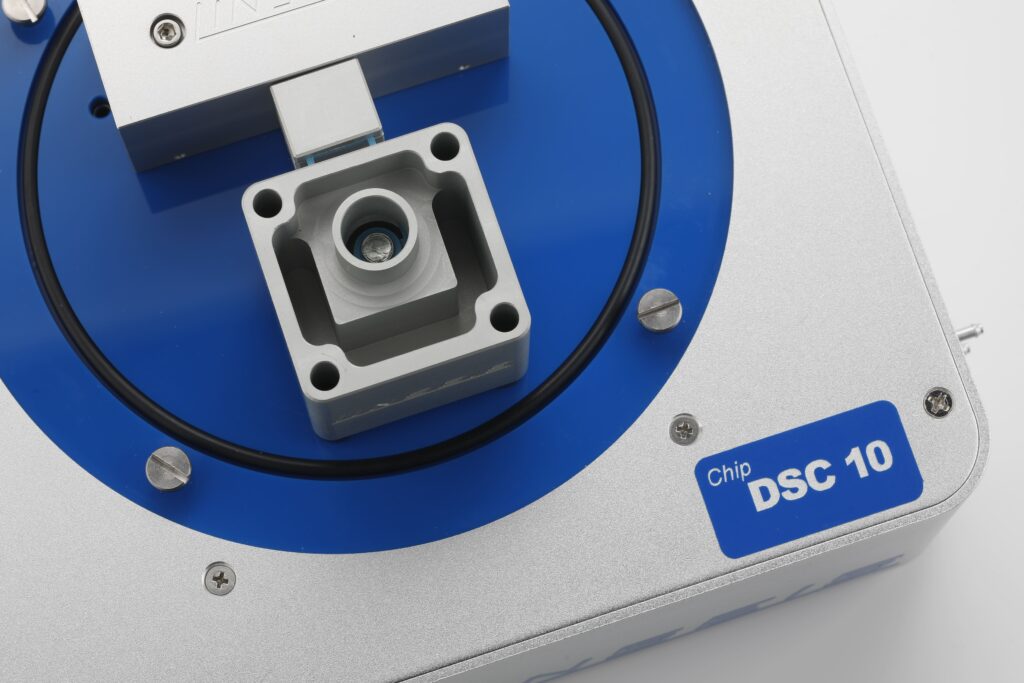
Quenchcooling attachment
Software
Smart solutions for individual use
The new Platinum software significantly improves your workflow, as the intuitive data processing requires only minimal parameter input.
AutoEval offers the user valuable assistance in the evaluation of standard processes such as glass transitions or melting points.
Thermal Library Product Identification Tool, provides a database of 600 polymers that enables an automatic identification tool for your tested polymer.
Controlling and / or monitoring the instruments through mobile devices gives you control wherever you are.

General functions
- Software packages are compatible with the latest Windows operating system
- Set up menu items
- All specific measurement parameters (user, laboratory, sample, company, etc.)
- Optional password and user levels
- Undo and redo function for all steps
- Stepless heating, cooling or lingering
- Multilingual versions such as English, German, French, Spanish, Chinese, Japanese, Russian, etc. (user selectable)
- The evaluation software has a range of functions that enable complete evaluation of all types of data
- Several smoothing models
- Complete evaluation history (all steps can be undone)
- Evaluation and data acquisition possible at the same time
- Data can be corrected with zero point and calibration correction
- The data evaluation includes: Peak separation software, signal correction and smoothing, first and second derivative, curve arithmetic, data peak evaluation, glass point evaluation, slope correction.
Zoom/individual segment display, multiple curve overlay, annotation and drawing tools, copy to clipboard, multiple export functions for graphic and data export, reference-based corrections
Applications
Application: Fast cooling rates without active cooling
The LINSEIS Chip DSC enables the fastest possible ballistic cooling rates without the need for an active cooler.
Due to the low thermal mass and the innovative sensor design, cooling rates of up to 500 K / min from 400 °C can be achieved.
With cooling rates of up to 90 K / min, cooling to 100 °C can even be achieved.
Cooling from 400 °C to 30 °C is possible in just 4 minutes by ballistic cooling.
Of course, the signal can still be evaluated during the cooling process and loses neither sensitivity nor accuracy.
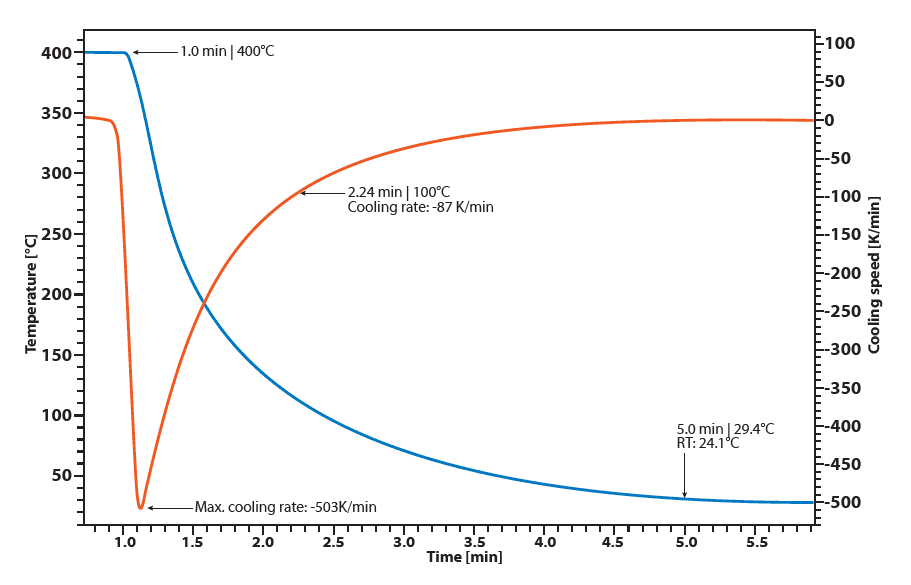
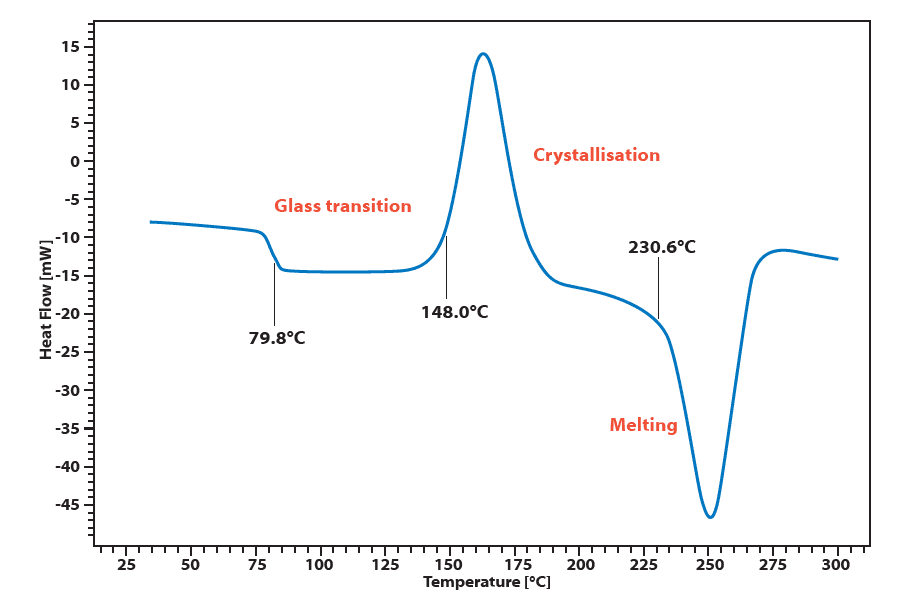
Application: Measurement of PET pellets
The analysis of polymers is one of the main applications of chip DSC.
Physical effects such as glass transitions, melting and crystallization points are of particular interest and often very difficult to detect.
The LINSEIS chip DSC offers high resolution and sensitivity and is therefore an ideal instrument for polymer analysis.
As an example, a PET pellet was heated, cooled to freeze the amorphous state and then analyzed on the chip DSC with a linear heating rate of 50 K / min.
The curve shows a significant glass transition around 80 °C, followed by a cold crystallization of the amorphous parts starting at 148 °C and a melting point at 230 °C.
Application: High-energy materials
High-energy materials are used, for example
used in airbags as propellants for explosive opening in the event of an accident.
In such analyses with DSC devices, there is a risk of damage to the sensor and furnace.
A major advantage of chip DSC is that the chip (integrating sensor and furnace) can be replaced easily and inexpensively by the operator in just a few simple steps.
In the event of damage to the measuring device, downtimes are drastically reduced.
A sensor change only takes a few seconds and calibration can be carried out in less than a quarter of an hour.
The example shows the DSC diagram of 2.8 mg airbag igniter.

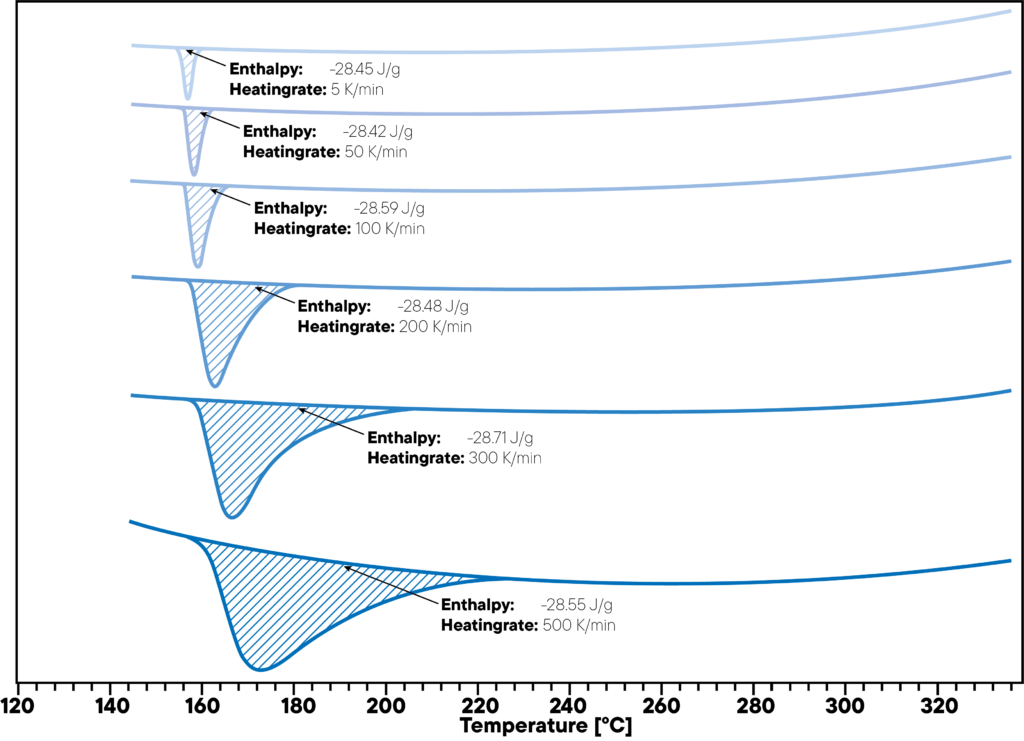
Application: Fast heating rates
Extremely high heating rates of up to 1000 K / min can be achieved, while the reproducibility of the melting enthalpy remains excellent.
The example shows the melting point of indium measured at different heating rates (5 K / min; 50 K / min; 100 K / min; 200 K / min; 300 K / min and 500 K / min).
With the chip DSC, a complete analysis including heating and cooling can be performed in just 10 minutes without optional cooling equipment (ballistic cooling).
Application: Thermochromics
With classic DSC devices, the sample cannot be observed during the measurement.
However, observing the sample can provide a lot of useful information (formation of bubbles or vapors, color change, etc.).
The graph shows an example of a thermochromic material showing an endothermic phase transition at 160 °C.
The phases have different colors and the color change from red to yellow is visible through the transparent cover.
A camera option is available to take pictures.
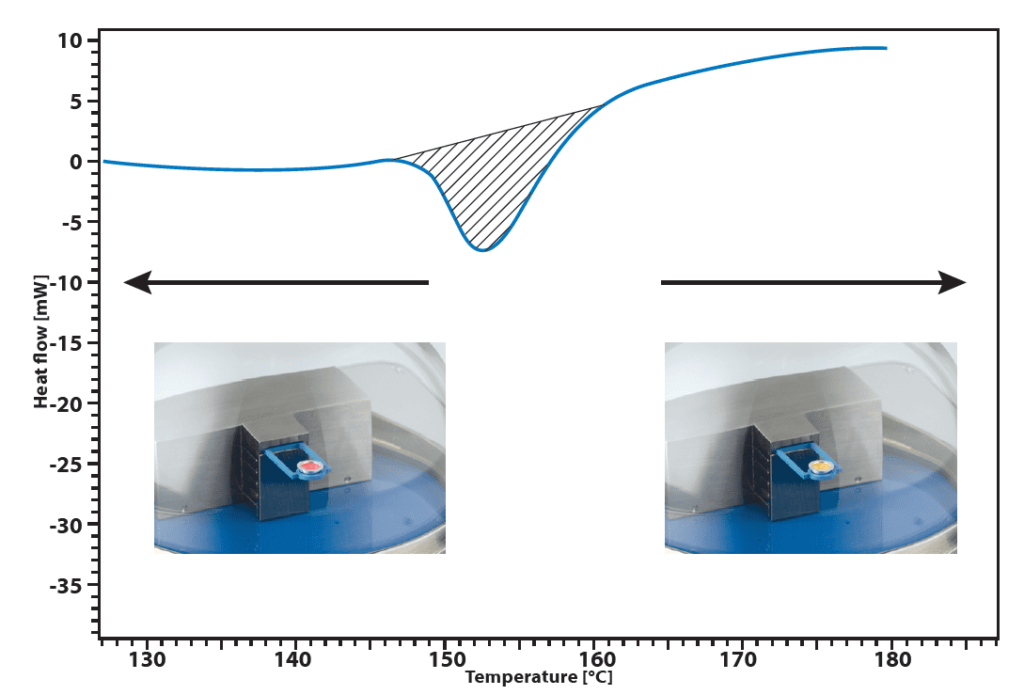
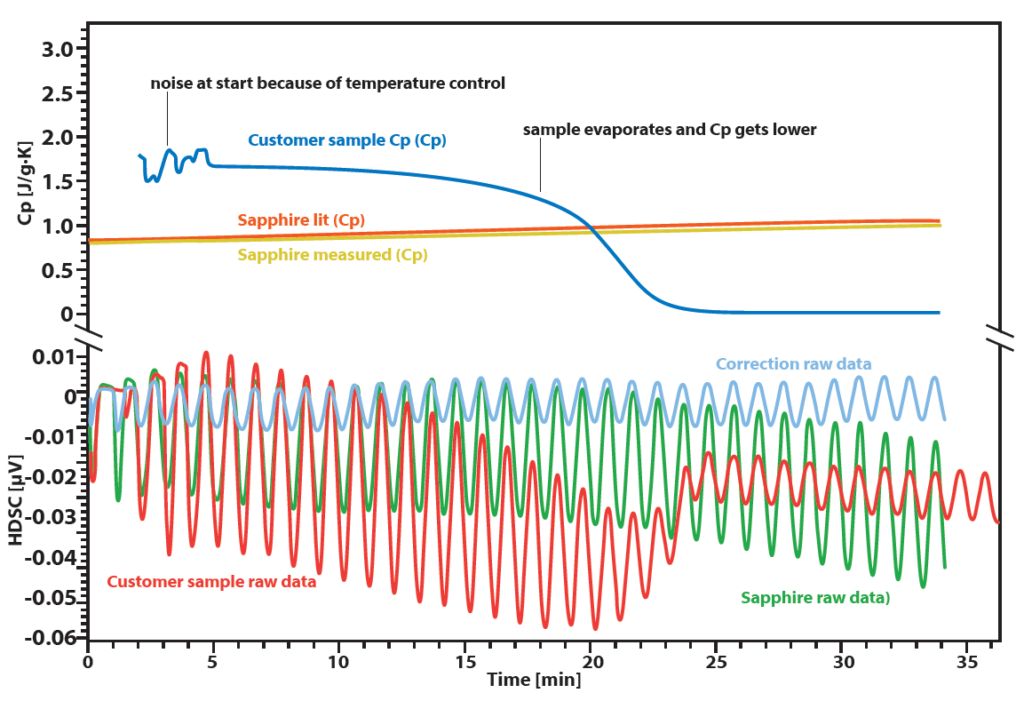
Application: Cp determination
The following measurement shows the modulated measurement of the heat capacity of sapphire at a heating rate of 10 K / min with an amplitude of 3 K. Due to the rapidly changing temperature and the change in amplitude caused by the heat capacity of the sample, a good signal quality can be achieved, which allows an assessment of the heat capacity with an error of only 3.5%.
A significantly better result than with most DSC devices.
Videos
Product presentation of the chip DSC
Installing the chip DSC
Replacing the sensor
Measurement of PET with chip DSC
Measurement of Cp with chip DSC
Well informed
